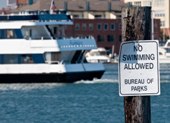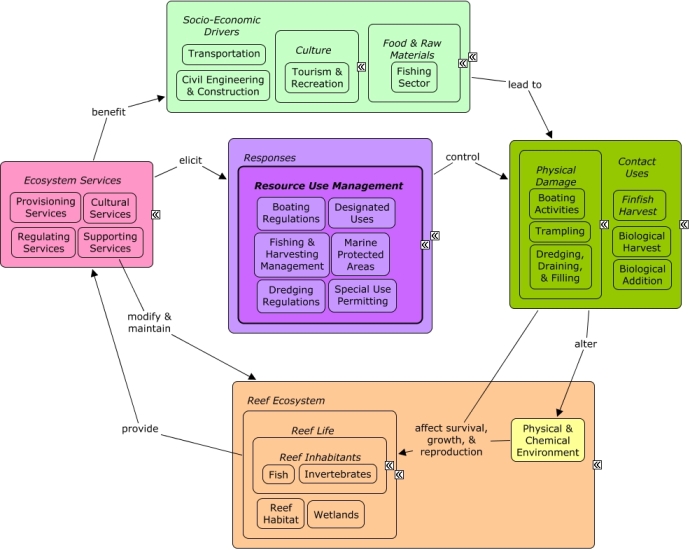ReefLink Database

Resource Use Management
Resource use management pertains to responses to regulate or limit contact activities that may directly impact coastal species through harvesting or physical damage. Examples include regulating boating or fishing activities, controls on dredging activities, establishment of protected areas, designating areas for specific uses, or permitting for special uses such as scientific collection.
CMap

CMap Description
A change in the provision of ecosystem services, or a desire to improve provision of ecosystem services, may elicit responses to reduce or manage contact uses that include harvesting or physical damage to reef species. Resource use management can be used to control contact uses by establishing designated uses for navigable water, swimmable water, or protected areas. Boating regulations, such as mooring buoys, fines, and low-wake zones, can be established to minimize sediment resuspension, groundings, or anchor damage. Fishing regulations can influence activities and locations of fishing boats and types of fishing gear used. Dredging regulations can be implemented to control the location and intensity of dredging, draining, or filling activities. Permitting for special uses, such as collection of species for scientific research, may be allowed. Many of the same socio-economic sectors that create pressures through contact uses benefit from goods and services provided by the reef, including recreational opportunities and seafood.Citations
More than 50 citations. Click here to load.
| Citation | Year | Study Location | Study Type | Database Topics |
|---|
Management Options
More than 50 management options. Click here to load.
| Management Option | Description | Sources | Database Topics |
|---|
Laws
More than 50 laws. Click here to load.
| Legal Citation | Purpose of Law | Management Organization | Database Topics |
|---|
